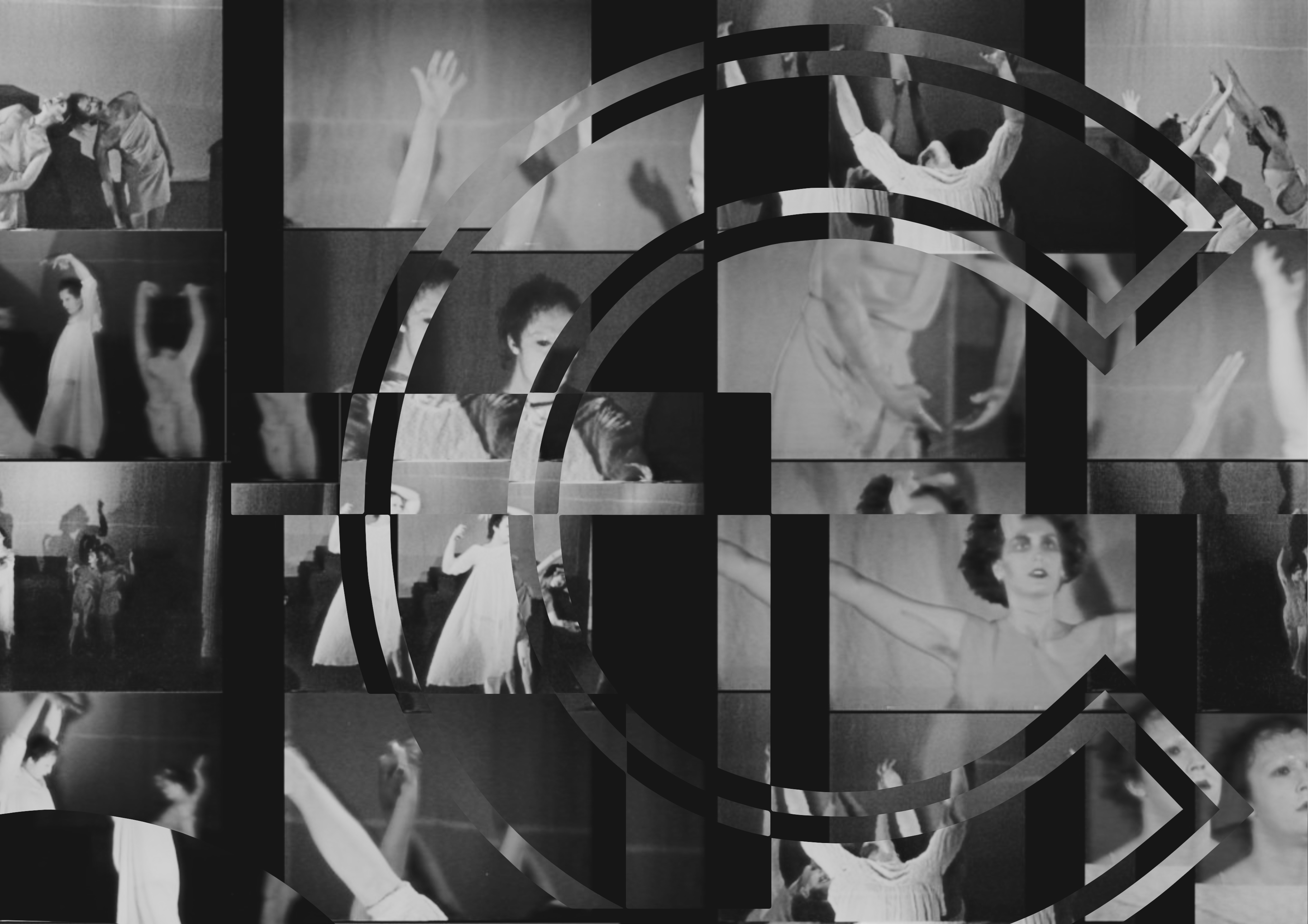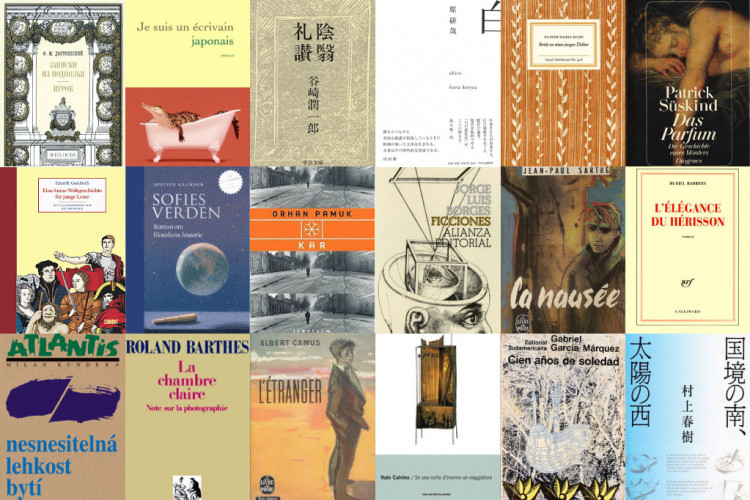
Make Climate Activism Messy
In this Open Column submission, Roro Kinasih proposes how—with regards to the countless crises today, the exclusionary design of modern environmentalism, to core-core TikToks—the key to saving the planet isn’t getting people to care, but to get them feel kinky, disgusted and emasculated.
Words by Whiteboard Journal
Belief, it seems, is in short supply these days. There was a time when we marched with conviction, clutching our metal straws and skipping school every Wednesday to strike with Greta for our future. Now, pretty much all of what we see online is a variation of how sad we are about our lost Bernie era and how it was all better back then and how we failed and that’s just the way it is. At this point, when so much is happening, when despair is at its highest and most contagious, it’s too much to hold onto hope.
Amid the already insurmountable big-picture of genocide and war, the rapid rise of anti-intellectualism, the expansion of the carceral state into personal politics, the desiccation of the university (which are just some of the infinite fractions that make up the world’s transgressions), there’s also climate change, aka the encroaching catastrophe that has already happened. This lies yet another infinite array of crises, each splintering into more, endlessly compounding the world’s transgressions.
Suppose we imagine world peace, in its perfect, final form, as the whole number 1, and each global issue (i.e. climate change, war, systemic oppression) is a fraction, of say, 0.1, with infinite fractions to follow, no matter how many increments we add (0.1 + 0.1 + 0.1…), it feels like we will never reach 1. In other words, no matter how much we address these issues, it always feels like we’re falling short—just like how 0.999… never quite equals 1, despite infinitely approaching it.
The totality of the problem is simply paralysing, and this sense of incompletion, its enormity and overwhelming scale, has shaped how we perceive climate change.
Of course initially, when Greta Thunberg first rallied students or when Lauren Singer, more commonly known @trashisfortossers, posted her viral video showing four years’ worth of trash packed neatly into a 16-ounce Mason jar, it felt possible to fix things, to live zero-waste.
We’re going to change the world with our individual habits. This is actually happening. And at that time I did genuinely believe that reducing my carbon output and practicing sustainability would save the Earth. It was the most empowering thing.
But as the world came collapsing down on us—as governments shrugged off catastrophe, the most powerful country in the world elected questionable presidents, and as every new crisis revealed the staggering limits of individual action—my post-adolescent idealistic phase came crashing down on me too.
Faced with the immensity of the problem, we now rely on data points, probabilities, and images of extremes (i.e. melting ice caps, record-high temperatures, satellite images of shrinking coastlines) to make sense of a reality that is already unfolding. By the time we register these signs as evidence, it is often too late to act.
It is all so remarkably cruel, so senseless, so profoundly anti-life. How, one must ask each morning, as I did when I first started writing this article, does one live in such bleak times?
My Pilates teacher started class: “A full moon, mercury in retrograde, fascism. Things are feeling heavy, let’s meditate.”
— Sophie Vershbow (@svershbow) March 17, 2025
It’s not just the headlines that are overwhelming. It’s the sheer, intolerable nihilism so many people have no problem espousing without a second thought. The prevailing mood is not one of fear or urgency but of resignation.
We have fallen into the seductive lie that we have no agency, no power or means of accruing it, no strong-enough relations with other people, and thus, albeit unspoken, no will to live.
This manifests, naturally, in culture, and no more apparently than in the online, high-art nihilism of core-core TikToks, where dissociated imagery set to melancholic music renders climate and political collapse almost poetic and somehow, nostalgic.
Mark Fisher once argued that our culture’s fixation on a lost (or entirely fabricated) past reflects a collapse of collective aspirations and social solidarity. This is the essence of core-core: a pastiche of grief for something we never really had.
And it is not just core-core. The same casual nihilism pulses through our everyday language, in the casual, desensitised existentialism of fans begging celebrities to “run them over with a truck,” or the systemic mainstreamification of CCTV death footage on Instagram and Facebook reels.
What we’re seeing here is a shift in how climate sensitivities circulate. The affective circuits of contemporary youth regarding climate are no longer mere anxiety, but a worry laced with a perverse absurdity, irony and an anaesthesised doom.
And for many, Jodi Dean argues, especially those on the left, the spectacle of climate collapse has become its own jouissance-like form of engagement, where doomscrolling becomes an ambient form of “I told you so” to the right-wing, capitalist elite. It’s a make-do, brief and bitter form of twisted pleasure amid this twisted state of the world.
But it is not our fault that we feel this way. This apathy is a symptom of a world where every crisis feels too vast to comprehend, and one reason collective climate action has stayed stagnant is because though this absurdist irreverence forms the emotional landscape of contemporary youth, traditional climate activism refuses to engage with these very real, very online feelings.
Mainstream environmentalism remains stubbornly earnest, relying on the hushed reverence of David Attenborough documentaries or the dystopian urgency of Greta Thunberg’s speeches, where the expectation is that we must be serious, that we must feel guilt, to fully comprehend the totality of collapse and count down the days to the end of the world.
But sometimes, the seriousness itself is stifling. It regresses into a performance of purity, of asceticism, that feels detached from the chaotic, contradictory realities of the people it’s meant to mobilise.
In mainstream environmentalist discourse, there is often a perceived ‘right way’ to fight for the environment, one that inevitably foists guilt on those who advocate differently. At the same time, critics on the other side weaponise that same guilt, pointing out the supposed hypocrisy of environmentalists who fly on planes or use single-use plastics.
Green identity, it seems, is structured more by punishment than reward. This punitive dynamic stems from the movement’s emphasis on self-imposed restraint, that of veganism, minimalism, zero-waste lifestyles, where indulgence, pleasure, and excess are typically denounced.
Worse still, mainstream environmental discourse often aligns itself with a certain aesthetic of virtue, one that is often inaccessible to those without the privilege of clean, curated, carefully controlled lifestyles.
Minimalism is an aesthetic of wealth. Slow fashion is expensive. Veganism, often presented as an ethical imperative, is not always financially or culturally feasible. The image of the modern environmentalist—earnest, disciplined, morally upright—is exclusionary by design.
A rebrand is long overdue. Nicole Seymour has called for a reimagining of climate activism, and I’m inclined to agree. If mainstream environmentalism is tied to whiteness, masculinity, and class privilege, what might happen if we invite disgust, kink, and emasculation into the mix? What if climate activism could be playful, messy, and joyfully imperfect? What if, instead of being paralysed by the overwhelming scale of collapse, we learned to laugh at the absurdity of it, not out of apathy but out of defiance?

“For me, paradise is communion with the rest of creation. And hell is the notion that I am somehow separated from it.” Nola Taylor from the Martu, an aboriginal Indigenous community in the Western Australian desert. (Credits: ANOHNI, Miracle Now at PS122 in NYC, 1996)
Pictured above is Miracle Now, a show that presents a messy, defiant ceremony that weaves queerness with ecocide, rejecting the polished, heterosexual aesthetic of mainstream environmentalism. Its creator, ANOHNI, speaks to feeling alienated from the broader, straight-laced environmental movement: “I was an urban queer with all the specific shit that goes down with that… I didn’t have access to a broader heterosexual thoroughfare.”
Here, queerness is framed not as unnatural but as the ultimate expression of nature, a feral force that grows despite everything designed to stamp it out. “Nothing could be more natural than queerness or transness… a society or a church could want nothing less than a faggot or a trans person. And yet that child grows forcibly like a weed… refusing not to exist.”
It’s this stubborn, unruly existence, this refusal to fit neatly into a pedestrian binary, that feels so urgently relevant to climate activism today. In a movement obsessed with purity and control, Miracle Now offers something wilder, weirder, and infinitely more alive.
Ultimately, truly understanding climate change and truly resonating with contemporary affective circuits requires escaping the fascination of the picture, away from the overwhelming and totalising perspective that treats the crisis as an all-or-nothing scenario.
It means embracing the partial, the fractured, the deeply human need for politics rooted in power, desire, and culture. An activism rooted in playfulness and play is an activism rooted in solidarity. And if we want climate activism to remain relevant, it needs to evolve and reflect the messy, contradictory effects of those it claims to represent.



